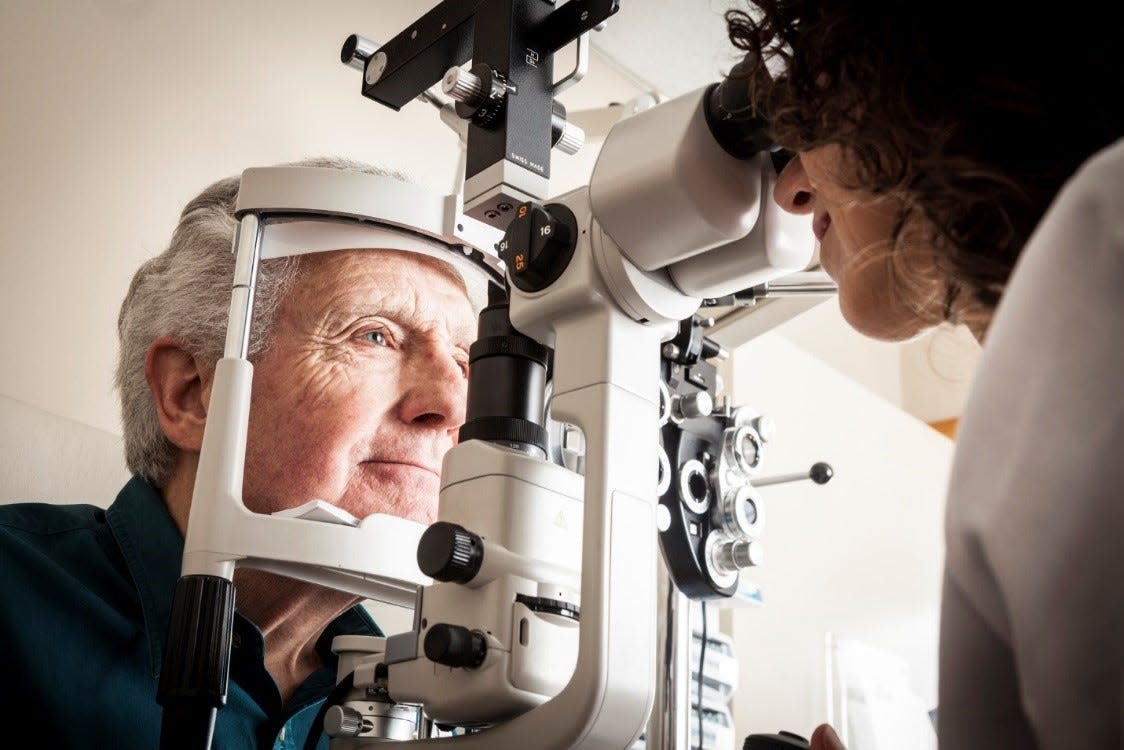Focus on Eyes: Advancements in macular degeneration, thyroid eye disease, eye infection treatment

During the past few years, there have been tremendous advances in the treatment of several significant eye diseases, including macular degeneration, thyroid eye disease and eye infection.
Macular degeneration
Macular degeneration is an aging disease affecting the macula, which is the central retina.
It interferes with the ability to drive, read and look at objects in fine detail.
Wet macular degeneration is caused by growth of blood vessels in the macula, causing leakage of blood and fluid.
Avastin, Lucentis and Eylea have been used to preserve and improve vision in wet macular degeneration.
Dr. Ho's previous columns:
You'll put your eye out: Know your holiday eye safety before causing serious ocular injury
Be you didn't know: Did you know eye doctors use Botox to help with eye procedures? Here's why
Watch out: Instances of domestic violence often leave victim with eye injuries
Until recently, there was no treatment for geographic atrophy, which is an advanced form of dry macular degeneration.
Dry macular degeneration causes progressive and irreversible loss of health retinal tissue.
Now, there are two new drugs, Syfovre and Izervay, which target the complement system that are associated with death of the retinal tissue.
Both medications slow down the progression of geographic atrophy but the visual that was lost.
Thyroid eye disease
Thyroid eye disease often happens in people with thyroid conditions.
It can occur in overactive or under functioning thyroid glands. The eye muscles and fat tissue around the eyes become inflamed and swollen.
This causes the eyes to bulge forward and the eyelids to be pulled back.
The eyelids cannot close, so eyes are exposed and irritated.
Additionally, one’s two eyes do not move together because of swelling in the eye muscles, resulting in double vision.
Thyroid eye disease becomes sight threatening when the optic nerves are compressed by swollen muscle and fat tissues.
This was treated traditionally with high dose steroids or radiation, which are associated with undesirable side effects.
Occasionally, surgery is performed to release the pressure on the optic nerve.
Teppezza is a newly approved medical therapy that targets the underlying factor that causes inflammation and swelling eye tissues.
Intravenous infusion of Teppezza rapidly improves thyroid eye disease symptoms including bulging eyes, double vision and optic nerve compression.
Eye infections
Infections of eyelids are common eye conditions.
Most of them are caused by bacteria that are readily treated with topical antibiotics.
Eyelid infection of mites or Demodex tends to be chronic and more prevalent in older adults.
Itching is the most common symptom.
Mites are not affected by ordinary antibiotics. Xdemvy is a new topical medication that kills the mites and eliminates the itching of the eyes.
In 2024, we can expect newer and more effective medical therapies and innovative surgeries for eye diseases through research and development.
Dr. Frederick Ho, the medical director of Atlantic Eye MD and Atlantic Surgery and Laser Center, is a board certified ophthalmologist. Atlantic Eye MD is located at 8040 N. Wickham Road in Melbourne. To make an appointment please call (321) 757-7272. To learn more visit AtlanticEyeMD.com.
This article originally appeared on Florida Today: Ophthalmology has seen big advancements in treatment over past few years

